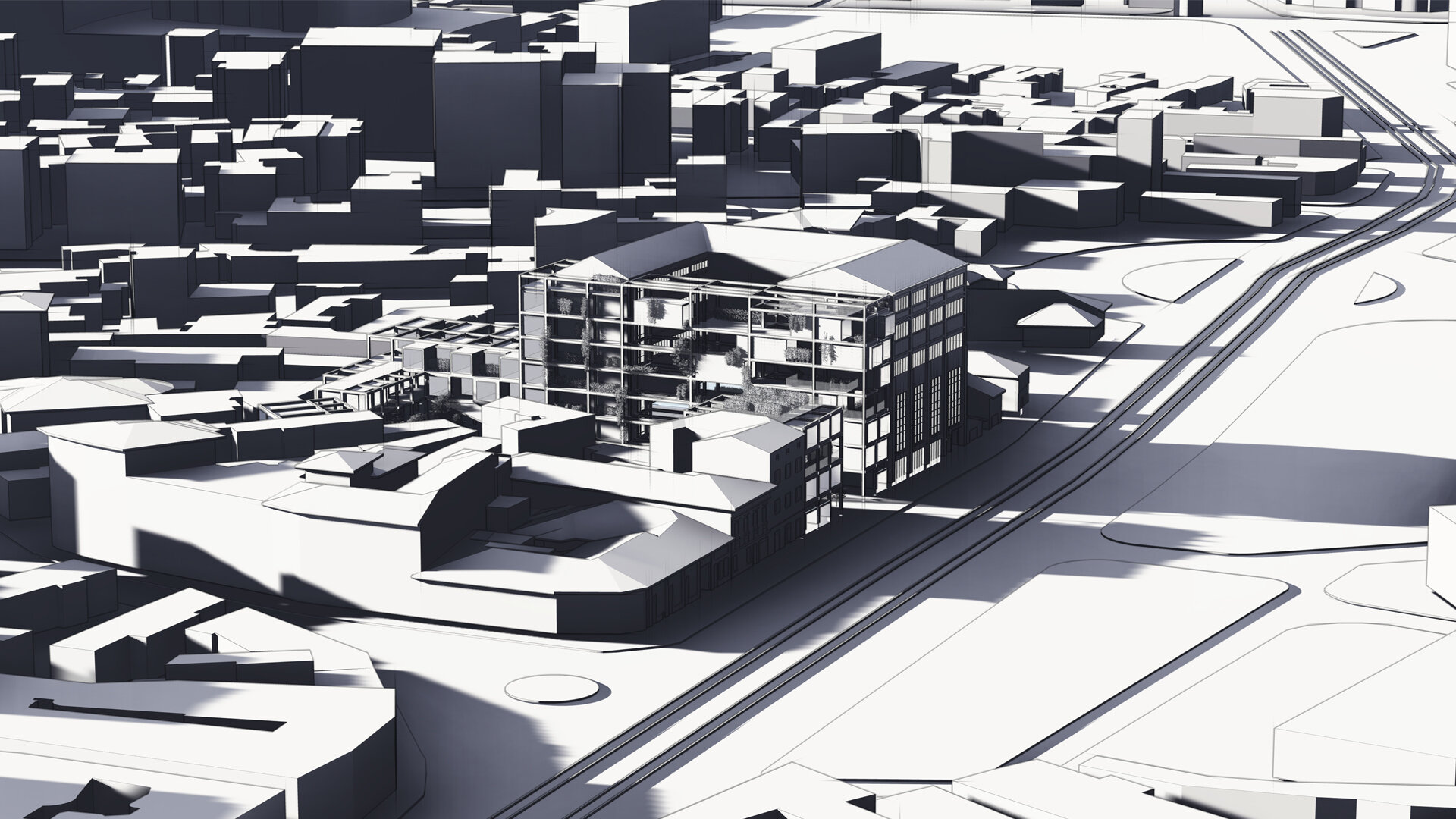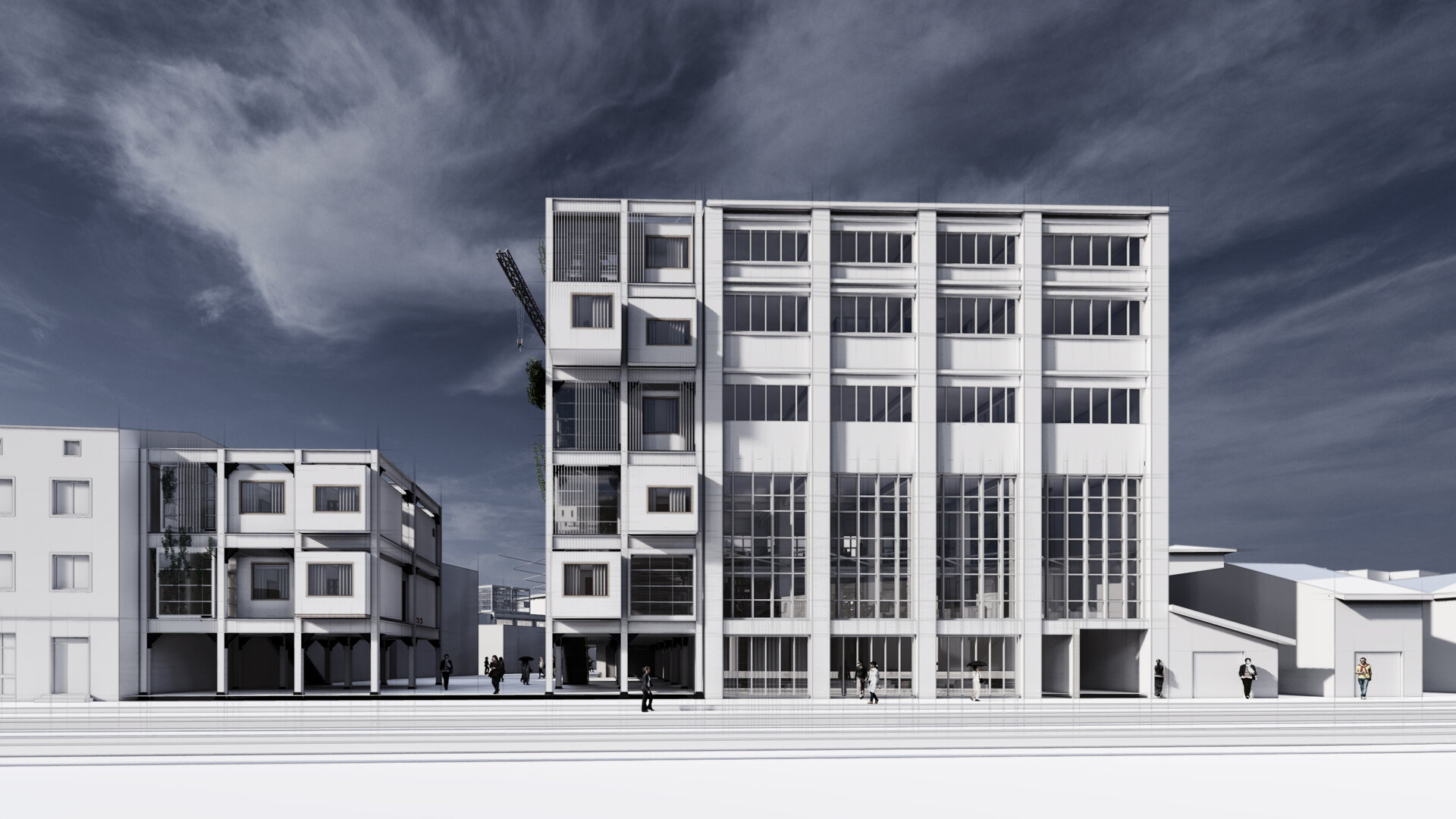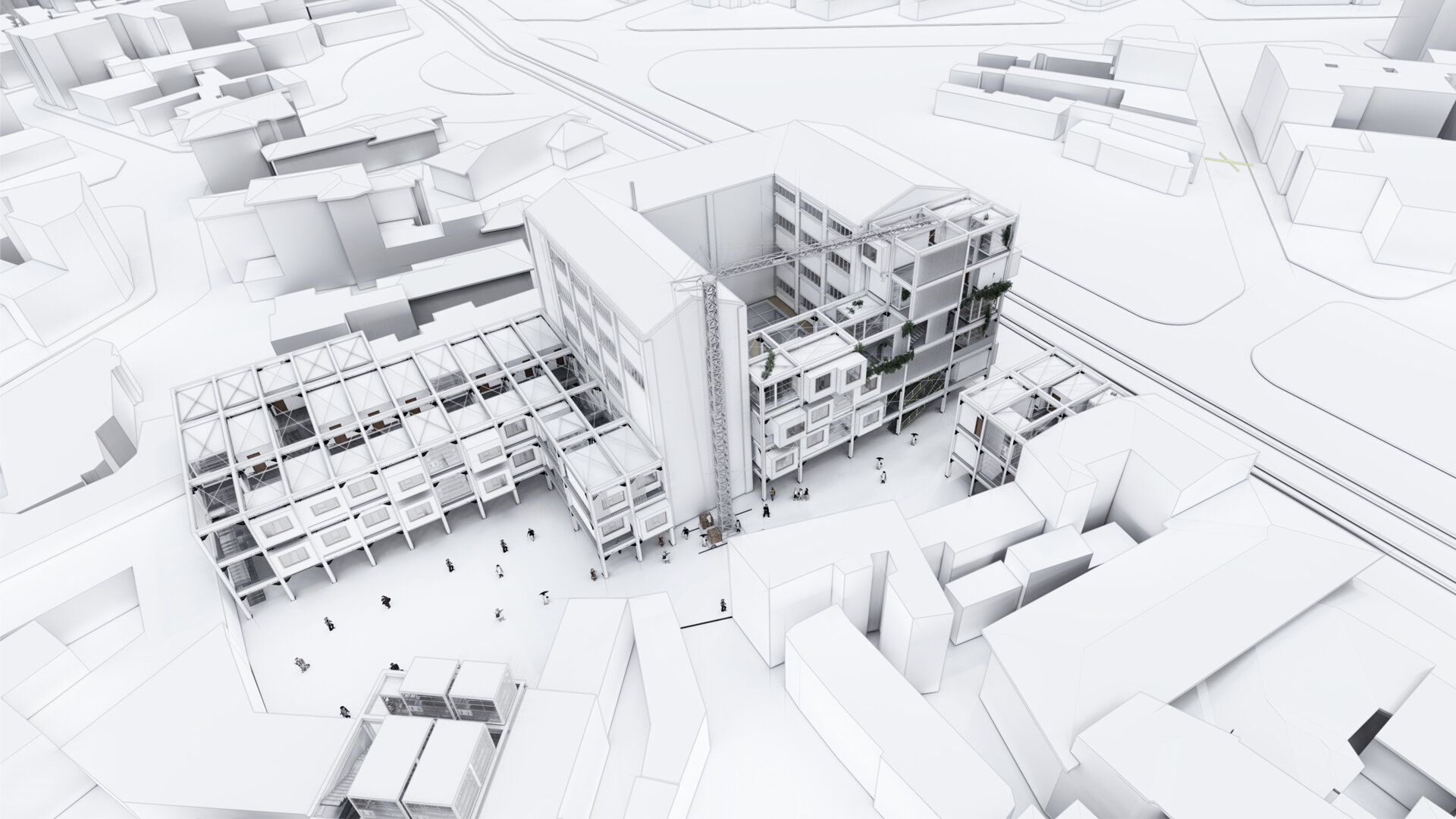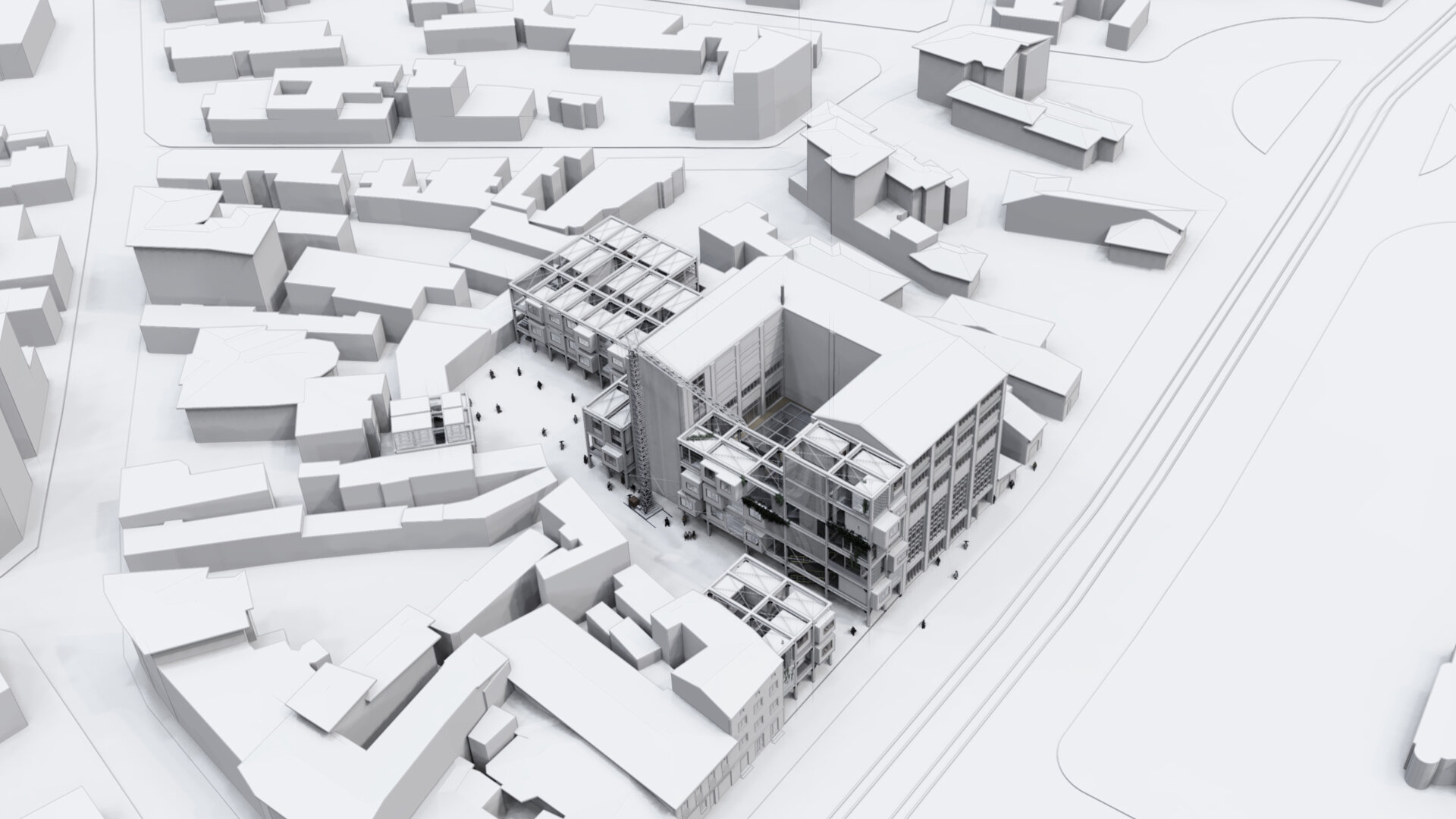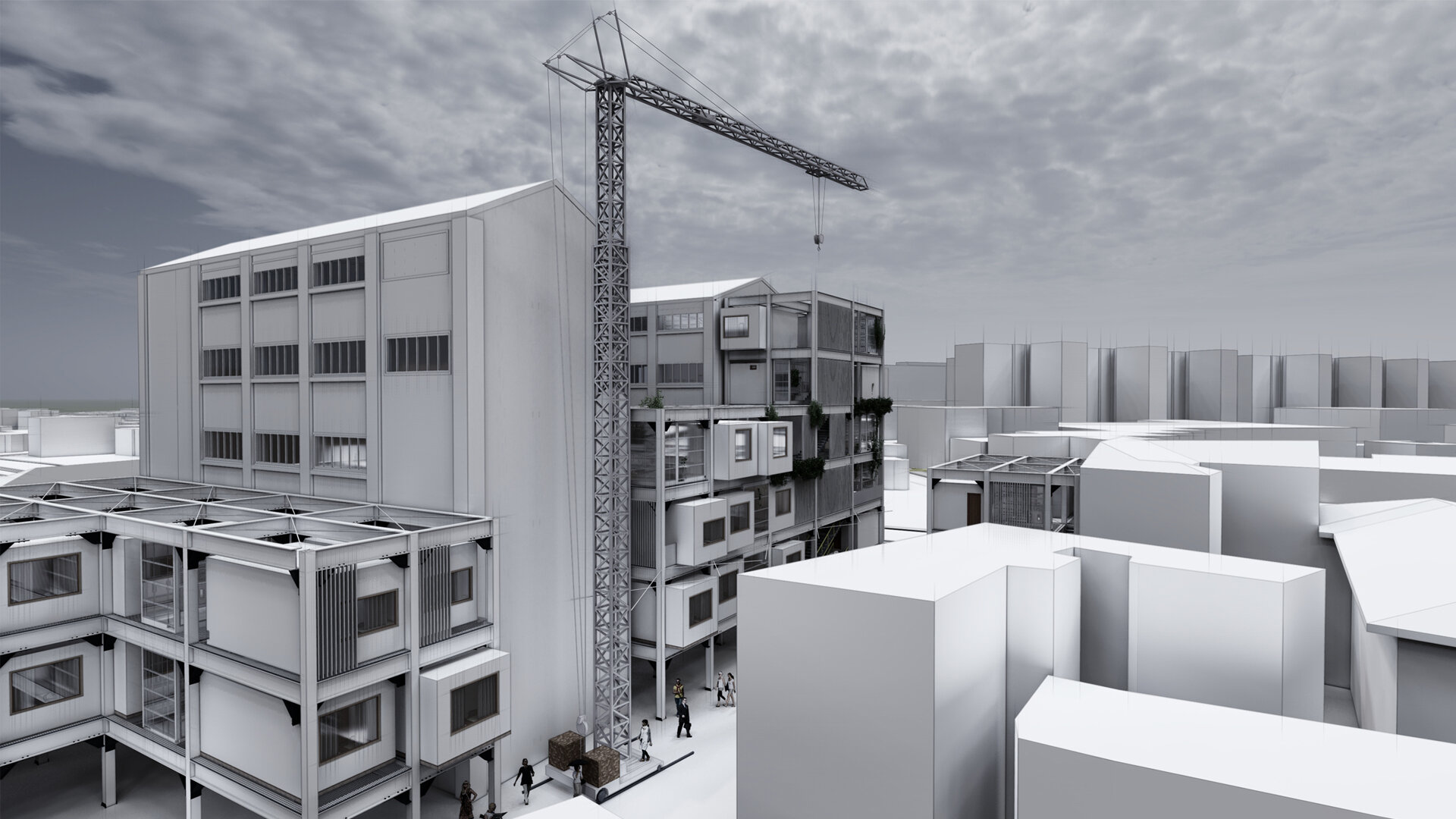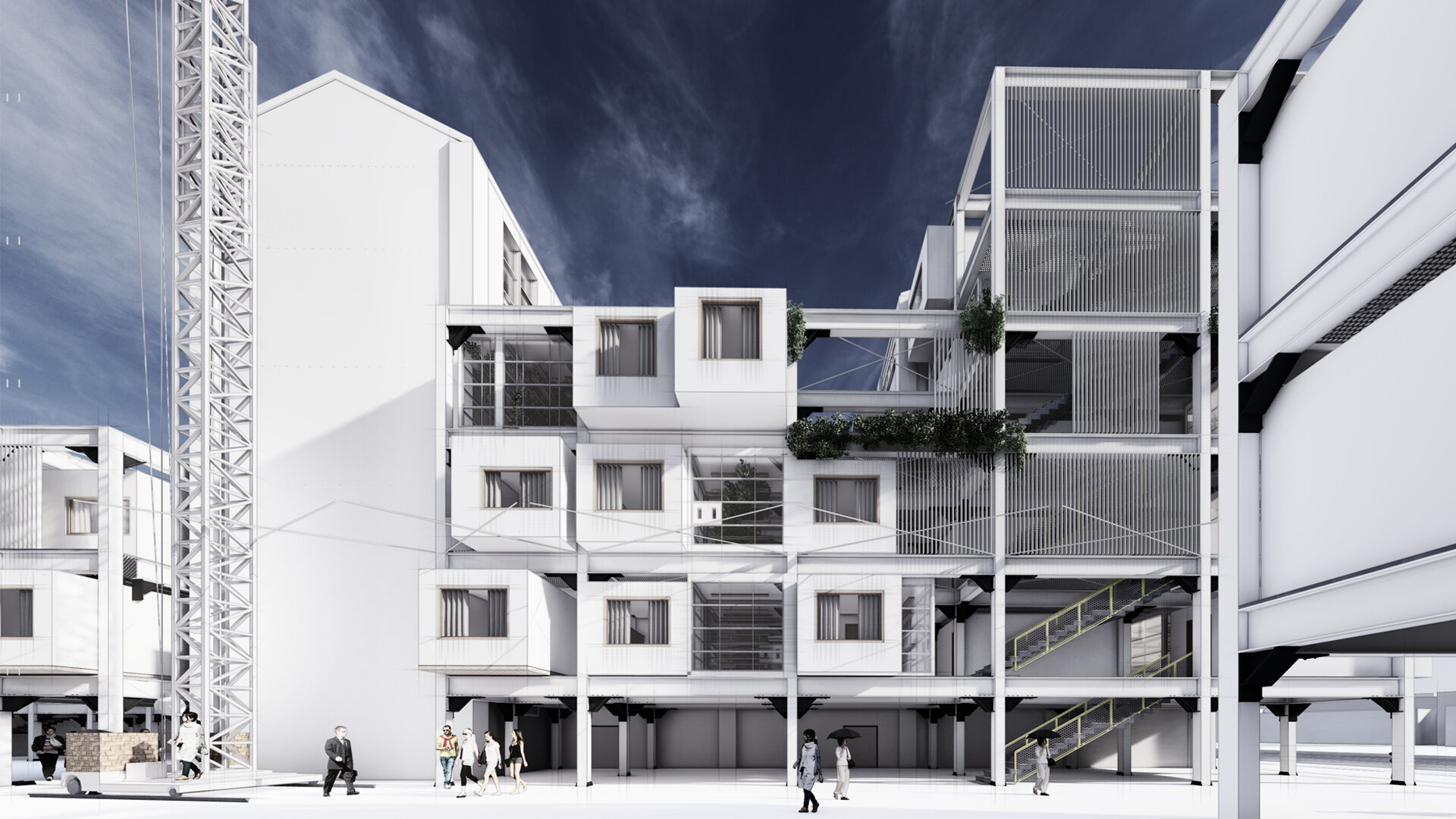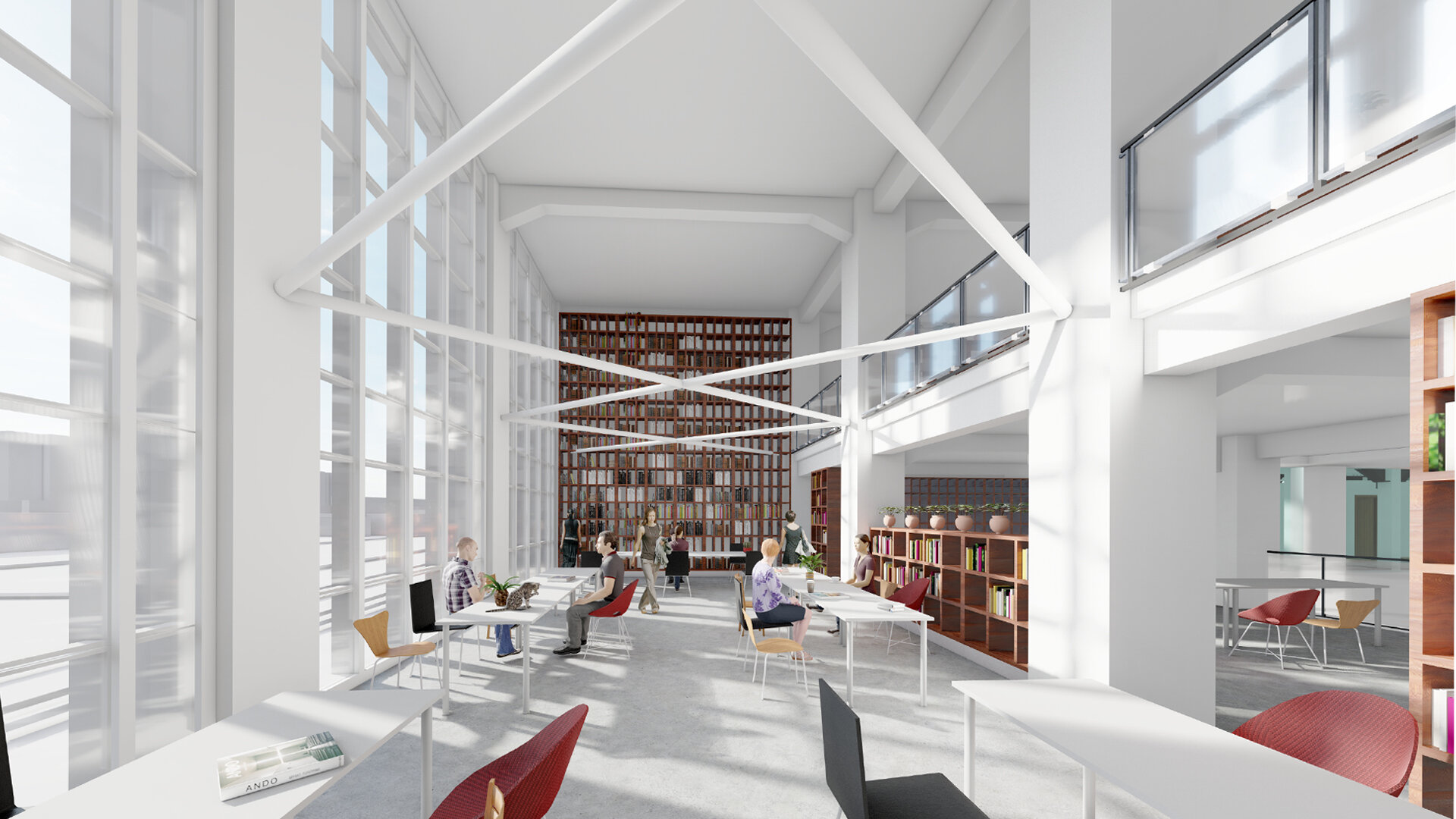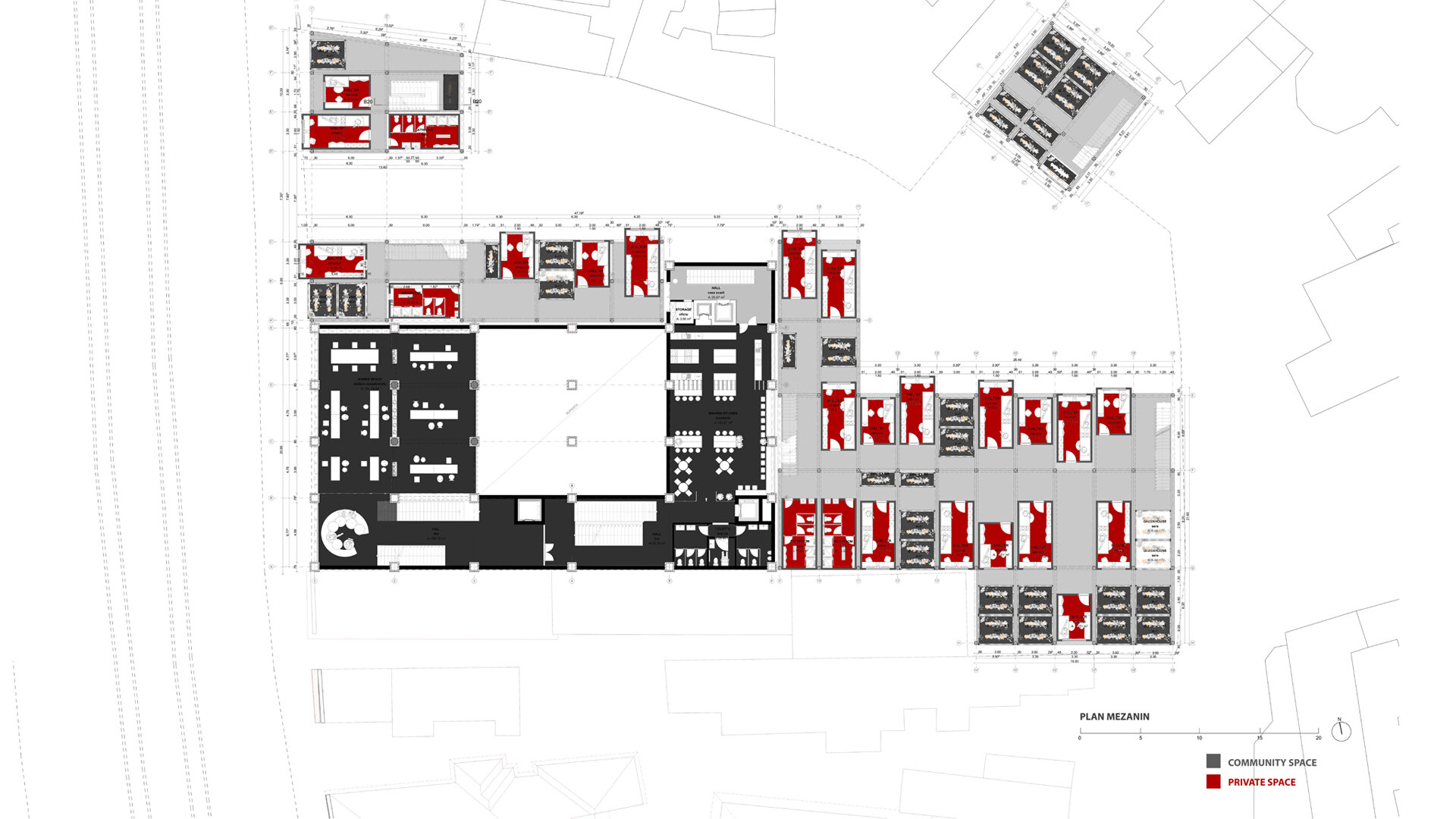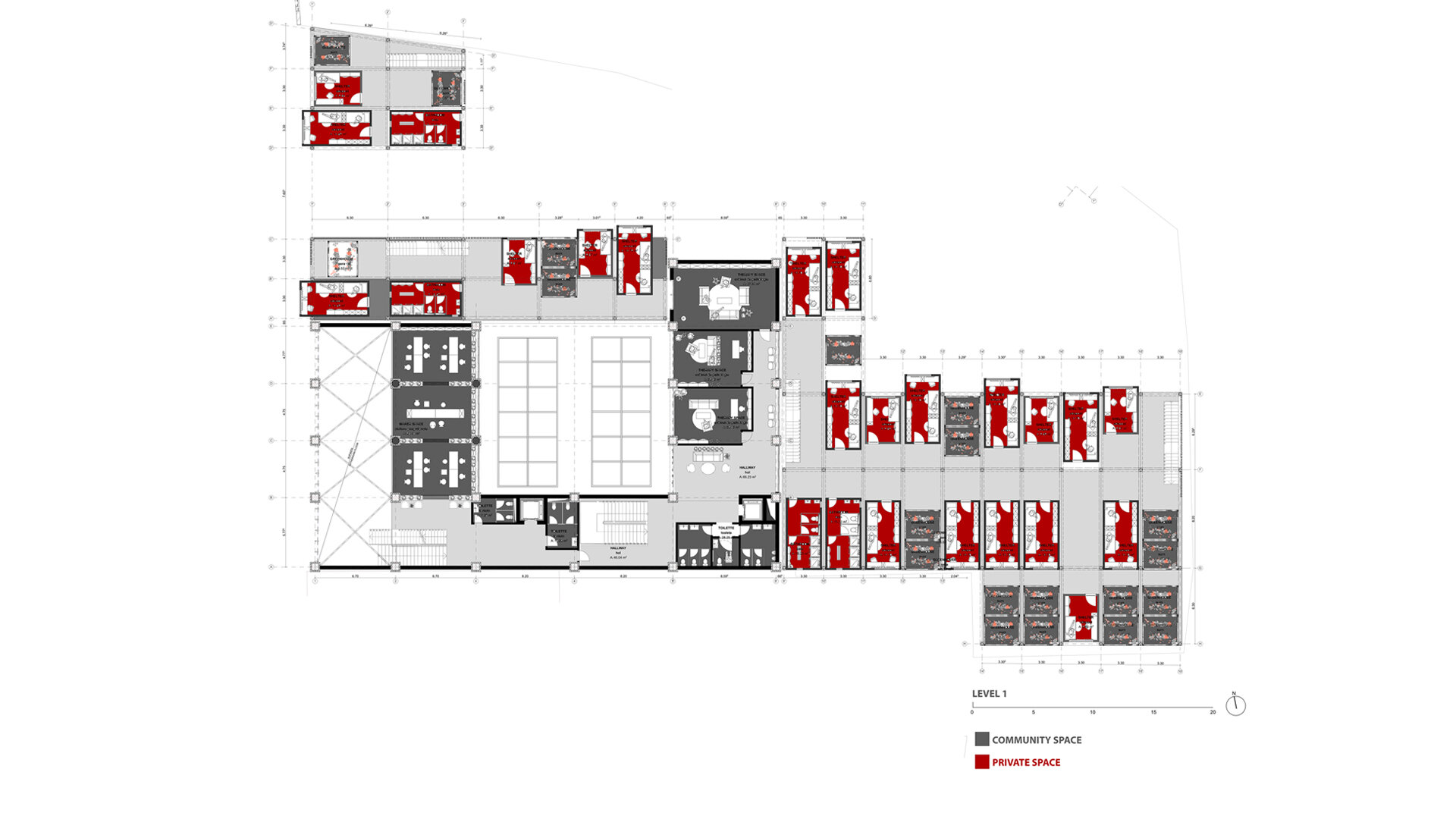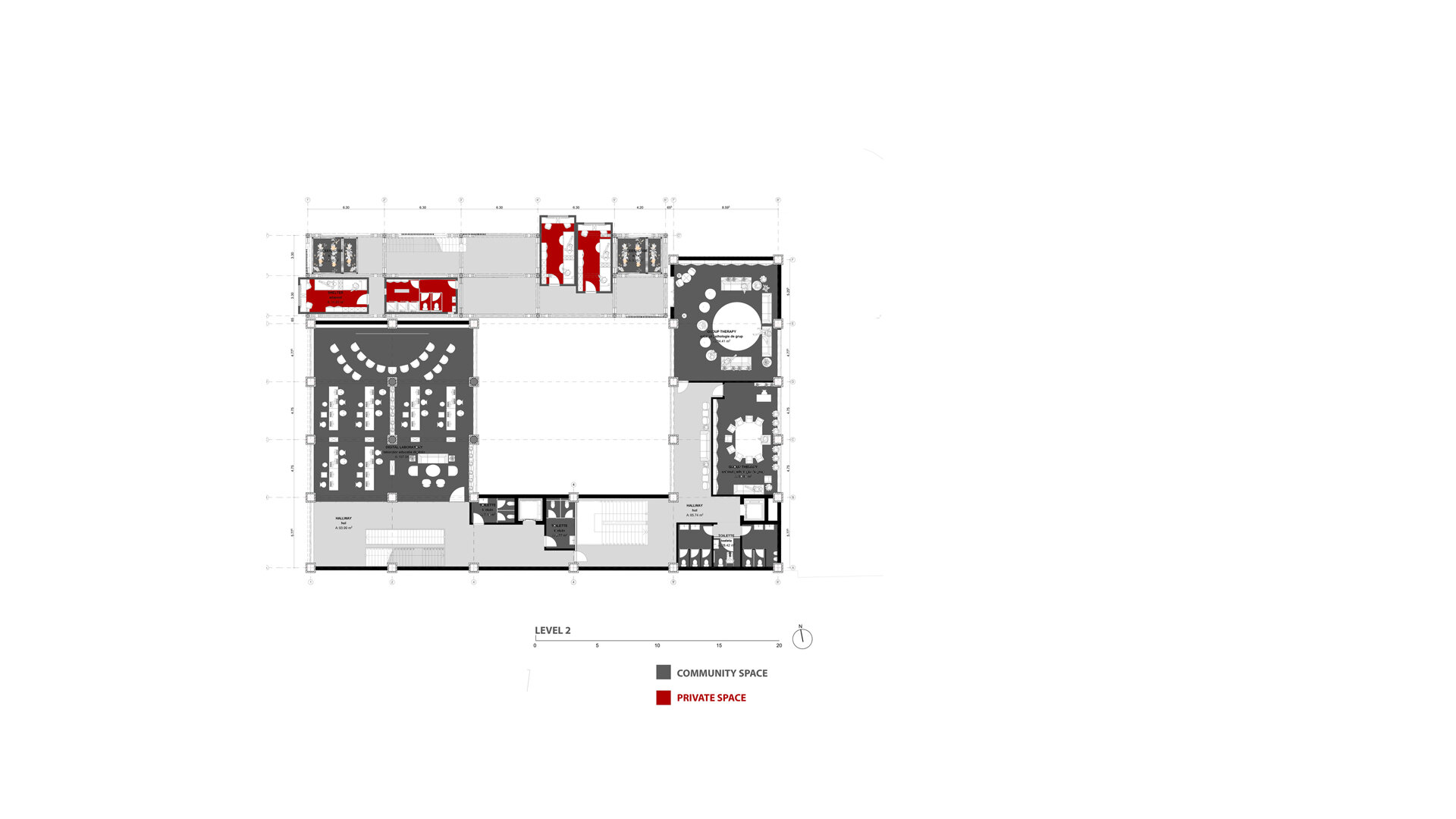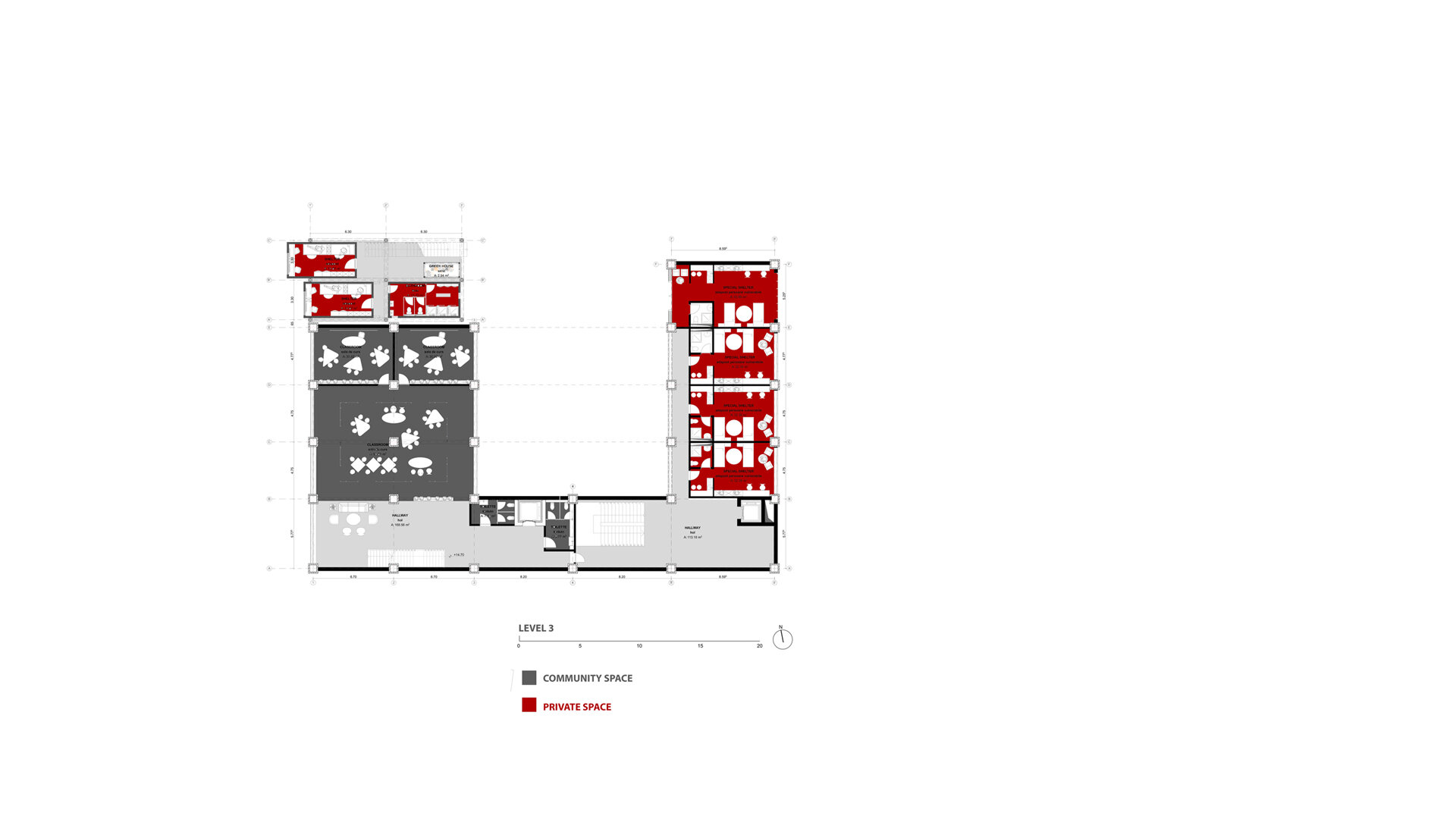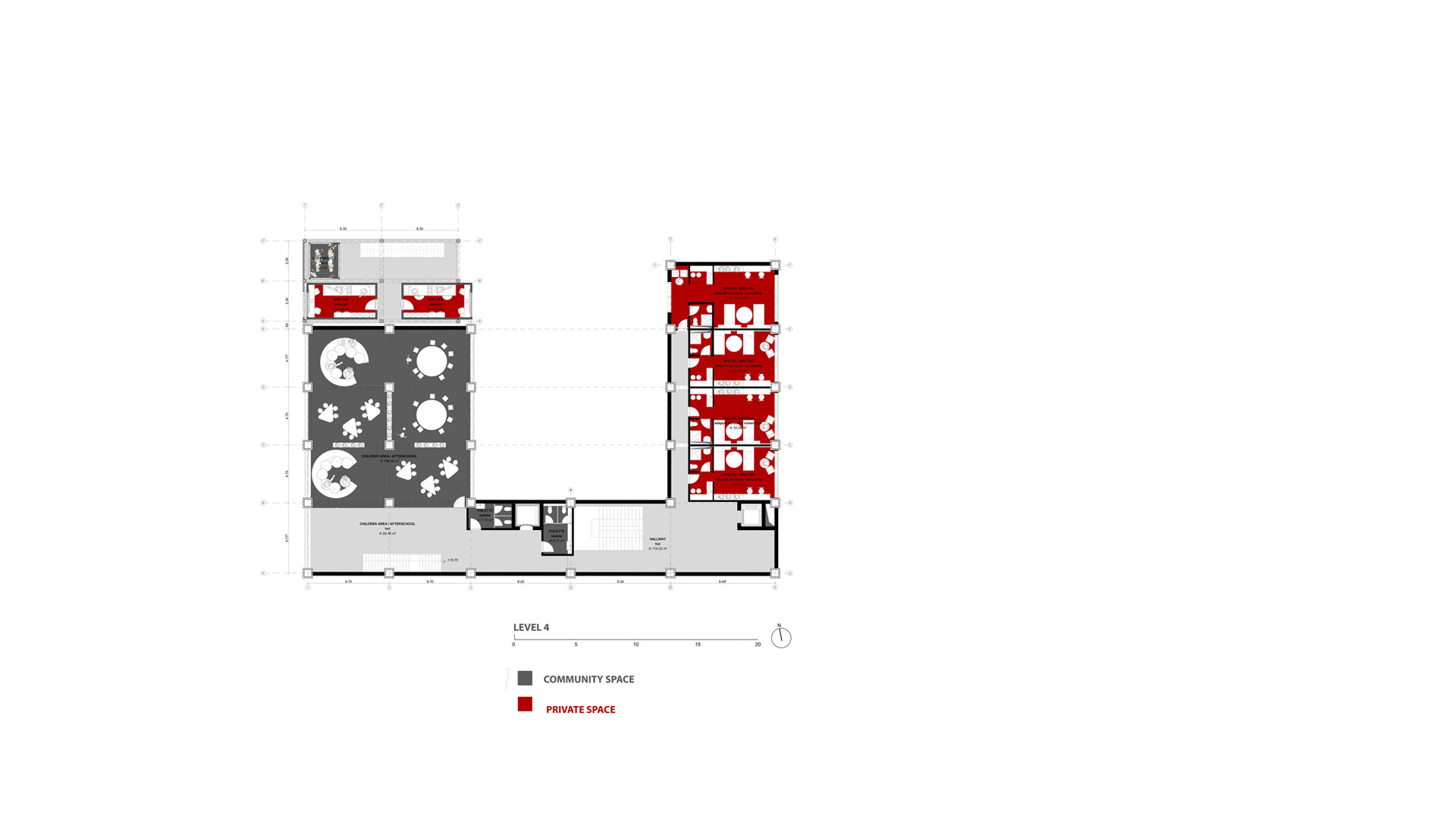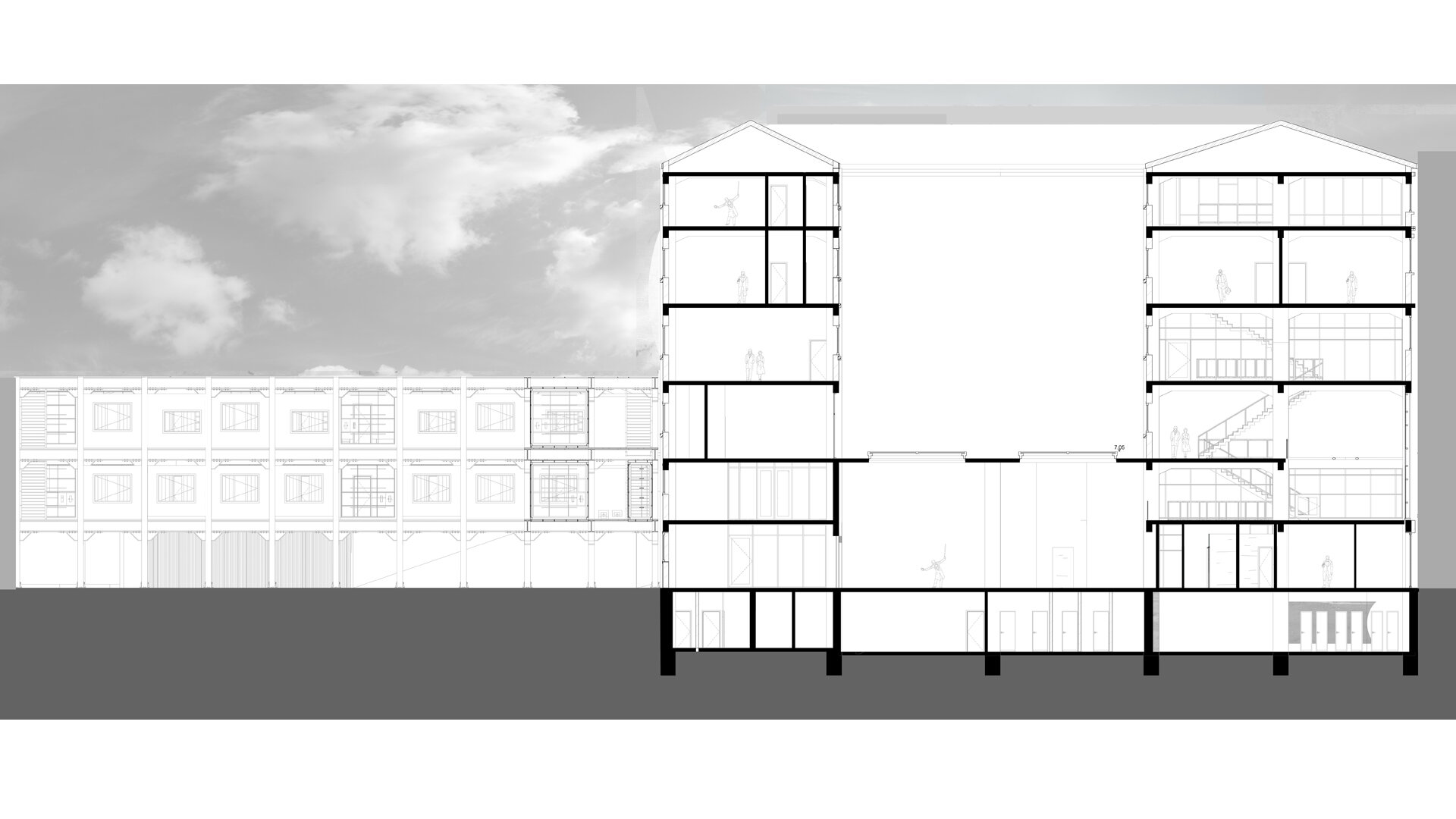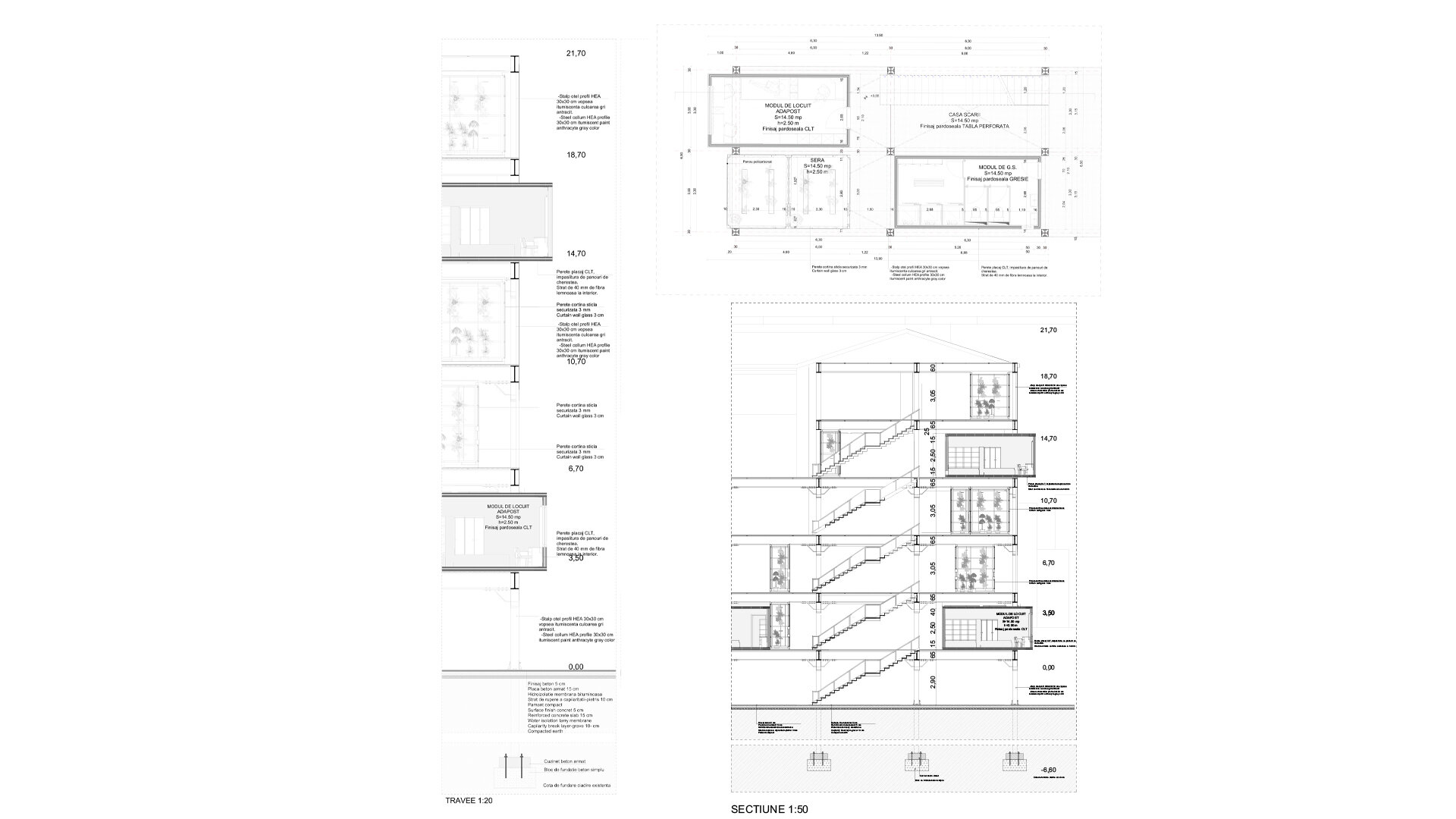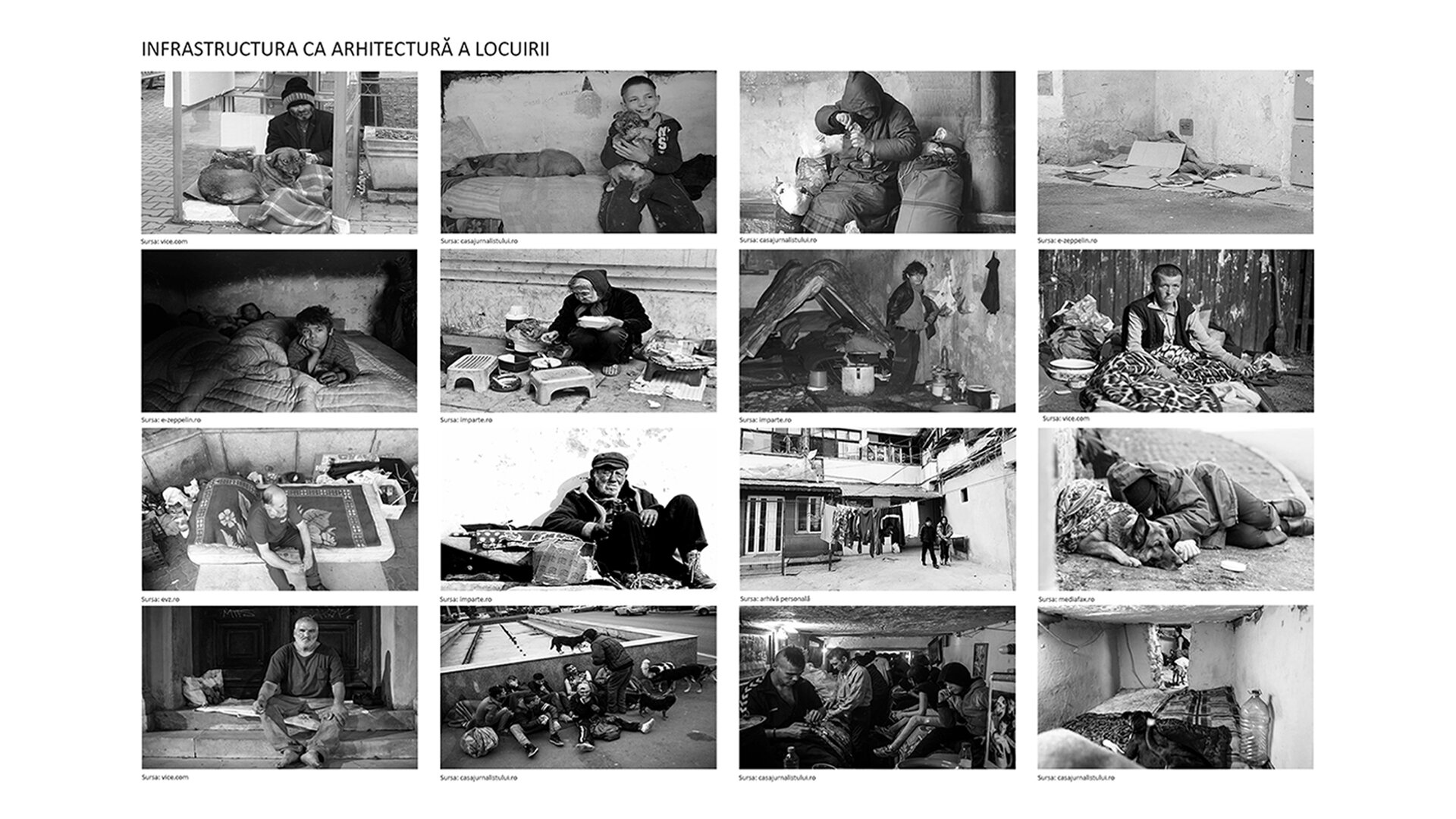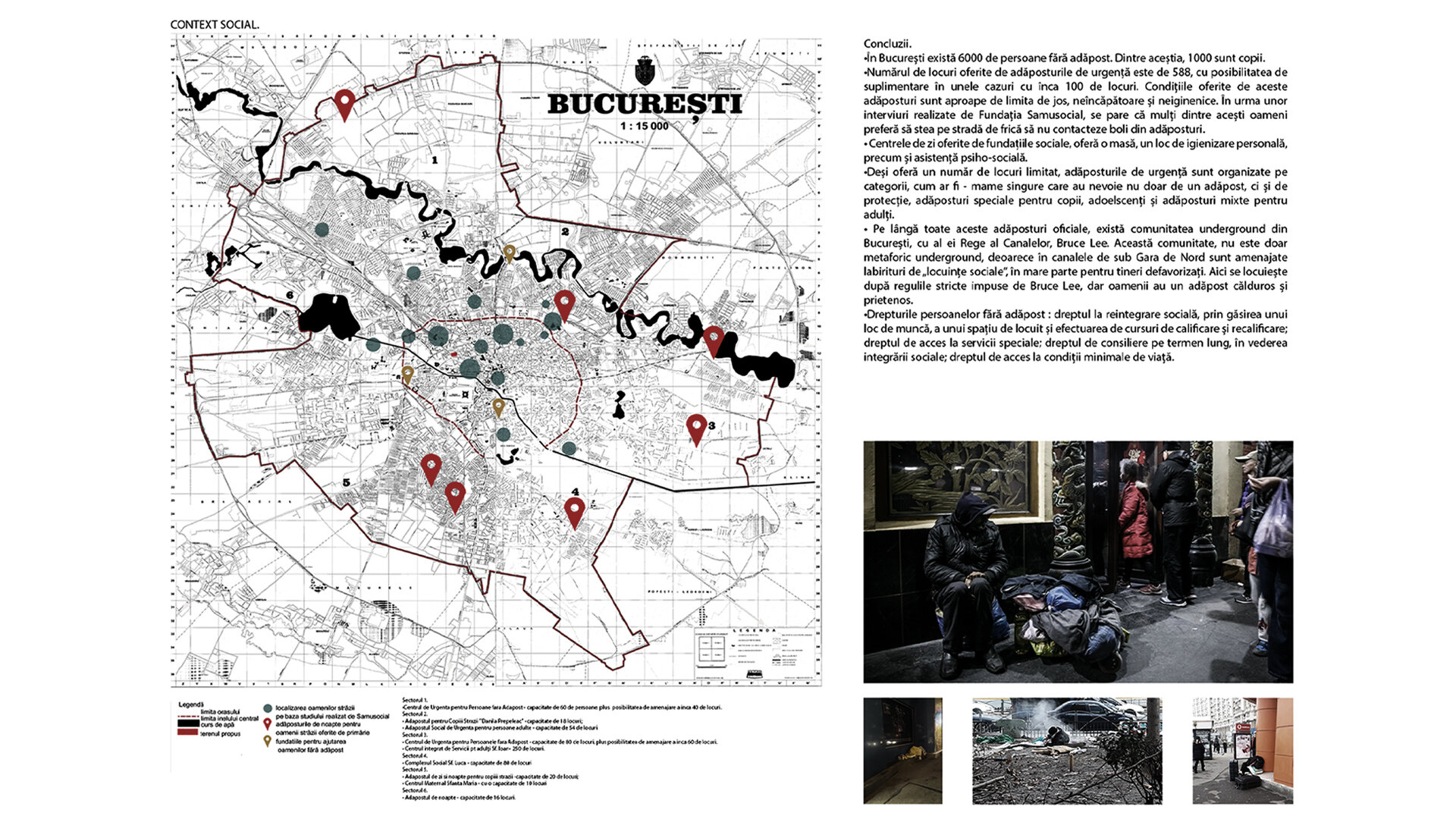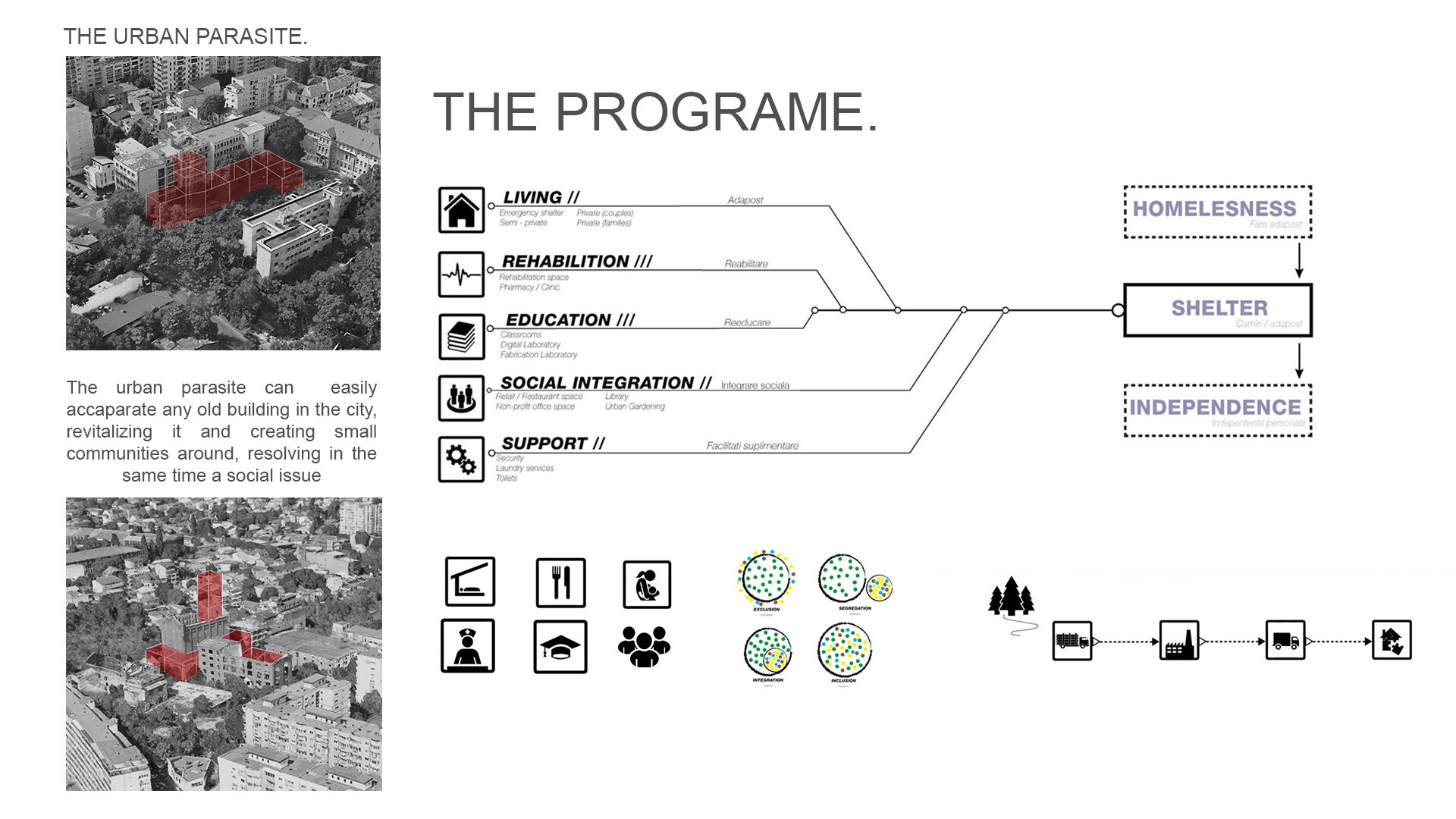
- Nomination for the “Research through Architecture / Architecture Diplomas” section
Shelter with dignity
Authors’ Comment
Shelter with dignity.
We are currently witnessing a dyslexic way of using the built environment of Bucharest. In an increasingly dynamic and populated capital, it is becoming more difficult but even more necessary to look closely at the social mechanisms that make everything work. The number of inhabitants increases in direct proportion to the number of the vulnerable population, homeless or without any other destination, and we notice that the integration mechanism of any kind is strongly deficient. The lack of interest in solving this problem leads to the lack of any solution for these people and, finally, to the contrasts that arise between the social strata. The motivation of this work comes from long personal and empirical observations of the way outcasts live on the streets and alleys of the city. If we look more closely at the phenomenon and do not step up while looking elsewhere, it is impossible not to have a sense of helplessness. We want to help and at the same time we are outraged why no one has done anything so far. The present paper therefore appears as a critical reaction on the way in which the subject of homeless people is treated by contemporary society. In our project, we create a place where the shelter and the urban garden are a house for the people of the street.
The concept is based on a simple system, a flexible structure, with the ability to add new features and change according to new needs. Everything happens in the former Czechoslovak factory, which we parasitize with a metal grid and functions for the rehabilitation of homeless people. The grid is a map of the location of densities, each point representing a small space for shelter. In the future, the structure may change its function, as the project could be completely dismantled and moved to a new site that requires this type of shelter. Each shelter container can be disassembled and its components can be replaced, not wasted.
We want to create a place of transit, where street people can benefit primarily from shelter, but also from medical care, professional support and education, for a certain period, until they can integrate into society - thus creating a solution sustainable, long-term, truly responsive to the needs of these people. Wooden houses, together with counseling activities, are elements that will too accelerate the process of social integration, providing a mental health framework for people on the street.
- Beyond the ruin. The conversion of the former tobacco warehouse of Isaccea
- Balneo-physio-therapeutic recovery center. Extension of Sylva Villa, Băile Govora
- Shelter with dignity
- The Bucharest City Loop
- Fort 13 Jilava. Political repression museum and research center
- Activating industrial premises – Student Center
- Hotel at Capidava
- Palaeontology research and visitor center – Hațeg District
- Memorial for the jews of Bukovina
- Agri-Park on the Nikolics domain
- Johann Michael Haydn Music Institute
- Creative Industries Factory in London
- Urban Cistern, Amman
- Refunctionalization and extension of the former sanatorium for border guards, Herculane Baths. Centre for body-mind treatment and accomodation
- “Țara Hațegului” International UNESCO Geopark. Fragments. Territorial diversity path
- The Roundhouse: built heritage academy
- Equestrian center of recovery and leisure on the former racecourse of “Nicolae Romanescu” park
- House of Movement. Ballet school and performing arts center in Bucharest
- Lacustrine Resort. The Danube River at Corabia
- Ludoteca
- Extension of the Baths ensamble, Băile Govora
- Drama Memorial
- New Public Architecture as Infill in Historical Context, Bucharest
- ECORIUM Local ecosystem research center
- Artist in Residence – Nae Petrescu Houses – Plantelor Street No. 56-58
- Extention of Public School of Arts and Crafts
- The Castle with Unicorns. Reactivation through school, arts and crafts of the Kornis Castle Ensemble in Mănăstirea Village
- House of games
- A New City Center – Conversion of the Pozzi Ceramic Factory, Laveno, Italy
- Urban Revitalization – Calea Moșilor
- Archaeological cultural center in the Constanta Peninsula
- Lapidarium. Extension of “Vasile Pârvan” Institute of Archaeology, Bucharest
- Pavilion complex within the “Măgura” sculpture camp, Buzău
- Recovery, revitalisation and insertion. Creative hub
- Integration through co-presence – Câmpulung Cultural Center
- C.U.B. Urban revitalization through social inclusion and cultural diversity
- Spatial Connections and Functional Conversion of Customs Warehouse, Bucharest
- ARTnEST – Performing Arts Center on Calea Victoriei
- Trauma and continuity – National Jewish museum, Victory Square, Bucharest
- Technological transformation hub
- The Enchanted Gardens of Ada Kaleh
- The revitalization of the Filipescu Park, Cultural Park Filipescu
- Terry Winery, Dragasani
- Mixed-function tower building (offices-hotel)
- Elca Market Square, Craiova
- The regeneration of Textila Factory
- Via Golden Quadrilateral. C Area. The Flow of Memory in Buciuman Cultural Landscape
